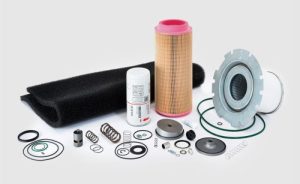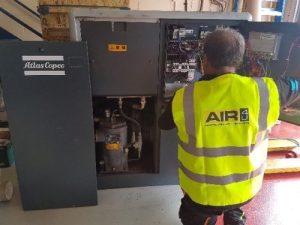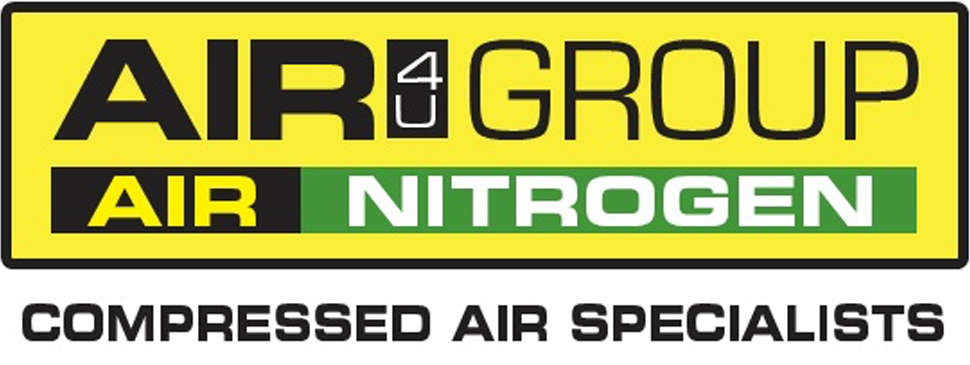Air Compressor Maintenance Checklist
Air compressors are the backbone of countless workshops, factories, and construction sites. From powering pneumatic tools to supporting large industrial systems, these machines often work behind the scenes but play a critical role in keeping operations running smoothly. Because of their reliability, it can be tempting to switch them on and forget about them.
However, like any hardworking piece of equipment, an air compressor requires regular care to stay efficient, safe, and dependable.
Without maintenance, minor problems can escalate into major breakdowns, resulting in costly downtime, energy waste, and even safety hazards.
This is where a structured air compressor maintenance checklist comes in. A consistent routine not only extends the life of your machine but also ensures that it delivers the pressure, performance, and efficiency you expect every time you use it.
Understanding Different Compressor Types
Before diving into the actual maintenance checklist, it helps to understand that not all compressors are created equal. Oil-lubricated machines, such as rotary screw or piston compressors, depend heavily on oil for smooth operation and therefore require regular oil changes and filter replacements.
Oil-free models avoid this step, instead placing more emphasis on the cleanliness of air filters and cooling systems.
Reciprocating compressors, which rely on pistons, have more moving parts and can suffer from vibration and wear if not carefully monitored. Rotary screw compressors are often designed for continuous operation, making cleaning of oil separators, coolant, and coolers particularly important.
By knowing which category your compressor falls into, you can develop a maintenance routine that is both effective and tailored to your specific equipment.

Do You Know They Need Daily And Weekly Care?
The foundation of any maintenance routine starts with simple, frequent checks. Daily, operators should ensure that oil levels are within the recommended range, drain any accumulated water in the receiver tank, and conduct a quick inspection to check for leaks, unusual noises, or signs of overheating.
These quick inspections take only minutes but can catch issues before they escalate into serious failures.
Weekly checks should go further. Air intake filters can collect dust quickly, and if they are not cleaned or replaced, the compressor is forced to work harder, which drives up energy costs and reduces efficiency. Belts, couplings, and safety valves should also be examined for signs of wear or malfunction.
A blocked inlet or failing valve can affect pressure output and may even create safety risks if left unattended. Think of this stage as giving your compressor a regular “health check” to ensure everything is running smoothly.
What Do Monthly And Quarterly Inspections Look Like?
Monthly maintenance is less about immediate operation and more about long-term reliability. This is the stage where you take a closer look at the machine’s fasteners, coolers, and electrical connections.
Vibrations from daily use can loosen bolts, and unchecked heat buildup in the cooler can reduce efficiency or cause shutdowns.
Cleaning and inspecting these components helps maintain stable performance.
Quarterly maintenance is a bigger task and often includes oil changes for lubricated compressors, replacement of filters, and inspection of oil separators. It is also a good time to test the accuracy of pressure settings and evaluate whether the compressor is still delivering the expected performance.
For industrial systems, quarterly servicing may involve checking vibration levels or inspecting drain valves and check valves that control the flow of compressed air.
This stage bridges the gap between day-to-day operation and annual servicing, ensuring that the machine continues to perform reliably under load.
Annual And Biannual Servicing
Annual or biannual maintenance represents the deep clean and thorough service that every compressor needs to stay at peak performance. By this stage, most manufacturers recommend a professional inspection, particularly for larger or heavily used systems.
This may include replacing worn seals, gaskets, or valves, cleaning or changing intake manifolds, and recalibrating gauges and control systems.
Additionally, annual servicing is an ideal opportunity to conduct an oil analysis. This helps detect signs of contamination or wear metals that indicate internal parts are deteriorating.
Structural checks of the receiver tank and foundation are also necessary, as corrosion or misalignment can compromise safety. In some cases, this may be the stage at which major overhauls or component replacements are scheduled, ensuring the system is ready for another year of reliable use.
Best Practices For Consistent Maintenance
While the checklist itself provides the “what” and “when” of maintenance, best practices help ensure that the tasks are carried out effectively.
Keeping a maintenance log is one of the most valuable habits, as it allows you to track when each task was completed, note any unusual observations, and identify patterns before they become serious.
Using manufacturer-approved parts and lubricants is equally essential, as substitutes can affect performance or void warranties.
Training operators to recognise common warning signs, such as overheating, oil foaming, or unusual noise, gives you more eyes and ears on the ground. Safety should also be a top priority in every maintenance activity.
Lock-out and tag-out procedures ensure that machines are powered down before servicing, protecting both operators and technicians.
Finally, embracing technology such as condition-based monitoring systems or computerised maintenance software can help automate reminders, trend analysis, and reporting.

Common Warning Signs And Troubleshooting
Even with regular care, compressors will occasionally show signs of stress. Recognising these signals early is key to preventing costly repairs. Loss of pressure or reduced airflow often points to leaks, clogged filters, or failing valves.
Excessive heat or vibration can indicate misalignment, blocked cooling systems, or failing bearings. Oil leaks or contamination in lubricated compressors may indicate failing seals or separator issues.
When any of these symptoms arise, the first step is to consult your maintenance log. Comparing performance data with records often reveals when the problem first appeared, helping to narrow down the cause. Prompt action is always best, as minor issues left unchecked tend to cascade into bigger, more expensive failures.
Building Your Own Maintenance Strategy
Every compressor environment is unique, so while a general checklist provides an excellent foundation, it should be tailored to your specific machine and workload. Begin by documenting the make, model, and operating conditions of your compressor.
Then design a schedule that incorporates daily, weekly, monthly, quarterly, and annual tasks, assigning responsibilities to operators or technicians as appropriate.
Review your logs regularly to see whether intervals need to be adjusted. Compressors operating in dusty, hot, or humid environments may require more frequent filter changes and moisture drainage, whereas machines with lighter usage can often extend certain intervals.
Partnering with a professional service provider for annual or biannual inspections ensures that the most complex tasks are handled correctly.
Over time, your checklist evolves into a fully personalised maintenance plan that balances efficiency, safety, and cost-effectiveness.
Protecting Your Investment - Get In Touch With Air4U Ltd Today!
An air compressor may be just one part of your operation, but its reliability has a direct impact on productivity.
By following a structured maintenance checklist, you can extend the life of your equipment, minimise downtime, and protect your energy efficiency. From simple daily checks to annual inspections, every step plays a role in preventing minor problems from turning into major failures.
With the right approach, your compressor will continue to perform as the reliable workhorse it was designed to be, delivering consistent air power whenever you need it.







